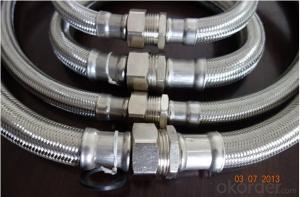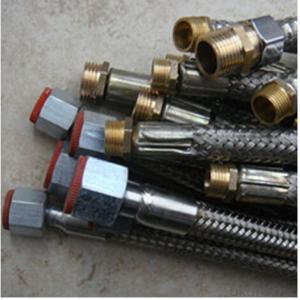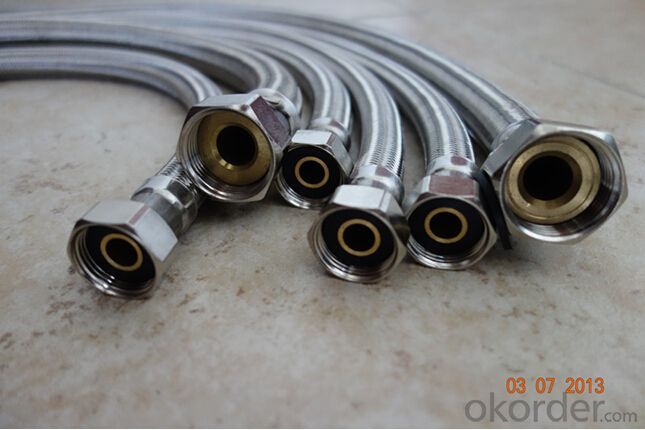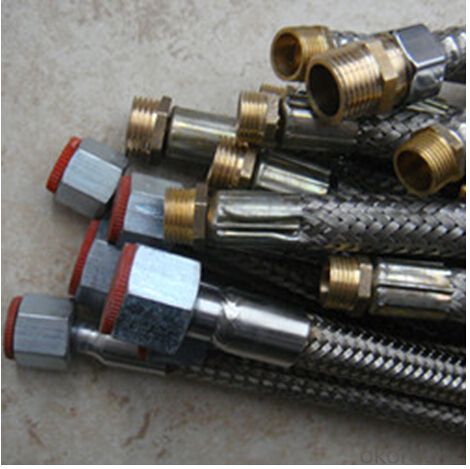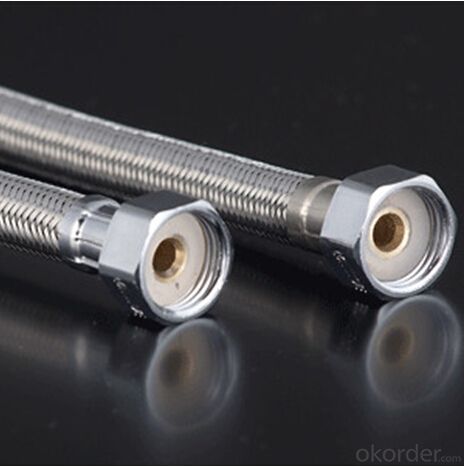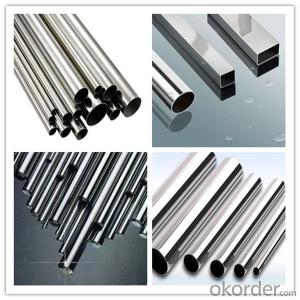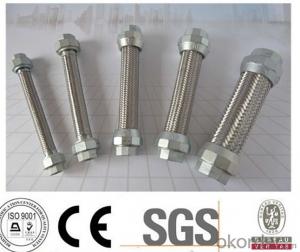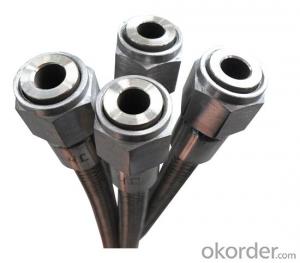Stainless Steel Braid Hose with 1/3'' Fittings
- Loading Port:
- Tianjin
- Payment Terms:
- TT OR LC
- Min Order Qty:
- 1000 pc
- Supply Capability:
- 100000 pc/month
OKorder Service Pledge
OKorder Financial Service
You Might Also Like
Specification
Stainless Steel Braid Hose with 1/3'' Fittings
Applications of Stainless Steel Braid Hose with 1/3'' Fittings:
--Refueling system
--Chemical and pharmaceutical industry
--Industrial hydraulic systems
--Air conditioners in industrial and construction –site vehicles
--Food and beverage industry
--Special and standard industrial applications
--Water and cleaning management
Features of Stainless Steel Braid Hose with 1/3'' Fittings:
1. )O. D.: 13-18MM 0.2-3M long
2. )Nut.: Nickel/Chrome Plated Brass (Zinc / Iron / Aluminum is available)
3. )Size Of Nut.: Female&Male 1/2''; 3/4''; 3/8''; 7/8''; 5/16'', and M10...
4. )Insert.: Brass (Zinc / Aluminum / Plastic is available)
5. )Inner tube.: Rubber/ EPDM/PVC
6. )Covered Material: Stainless Steel 201, 301, 304 /Aluminium Wire
7. )Working Pressure: 5Kg-15Kg
8. )Temperature: 0-92° C
9. )Quality Assurance: 3 years
RemarkAPPLICATION: HOUSEEHOLD WARE, BATHROOM WARE, SHOWER HOSE
PAYMENT: T/T, L/C
DELIVERY TIME: 20DAYS OR 30DAYS AFTER RECEIVED 30% DEPOSITS
MOQ: 5000PCS
ODM&OEM IS ACCEPTABLE
PackageInner: PP bag /Blister packing Outer: Carton box
Specifications of Stainless Steel Braid Hose with 1/3'' Fittings:
NO | I.D | Refer to O.D | Working pressure | Burst pressure | approximate Weight | |||||
(inch) | (mm) | (inch) | (mm) | MPa | Psi | MPa | Psi | kg/m | lbs/ft | |
1 | 1/8 | 3.2±0.2 | 0.35 | 9±0.3 | 2.06 | 300 | 8.27 | 1200 | 0.078 | 0.12 |
2 | 5/32 | 4±0.2 | 0.4 | 10±0.3 | 2.06 | 300 | 8.27 | 1200 | 0.092 | 0.14 |
3 | 3/16 | 4.8±0.2 | 0.43 | 11±0.3 | 2.06 | 300 | 8.27 | 1200 | 0.108 | 0.16 |
4 | 1/4 | 6.3±0.3 | 0.5 | 12.7±0.3 | 2.06 | 300 | 8.27 | 1200 | 0.134 | 0.2 |
5 | 5/16 | 8.0±0.3 | 0.56 | 14±0.3 | 2.06 | 300 | 8.27 | 1200 | 0.147 | 0.22 |
6 | 3/8 | 9.5±0.3 | 0.63 | 16±0.4 | 2.06 | 300 | 8.27 | 1200 | 0.182 | 0.27 |
7 | 15/32 | 12±0.3 | 0.75 | 19±0.5 | 2.06 | 300 | 8.27 | 1200 | 0.238 | 0.35 |
8 | 1/2 | 12.7±0.4 | 0.78 | 20±0.5 | 2.06 | 300 | 8.27 | 1200 | 0.262 | 0.39 |
9 | 5/8 | 16±0.4 | 0.94 | 24±0.5 | 1.03 | 150 | 4.12 | 600 | 0.351 | 0.52 |
10 | 3/4 | 19±0.4 | 1.13 | 28.8±0.5 | 1.03 | 150 | 4.12 | 600 | 0.515 | 0.77 |
11 | 1 | 25.4±0.5 | 1.38 | 35±0.6 | 1.03 | 150 | 4.12 | 600 | 0.637 | 0.95 |
Images of Stainless Steel Braid Hose with 1/3'' Fittings:
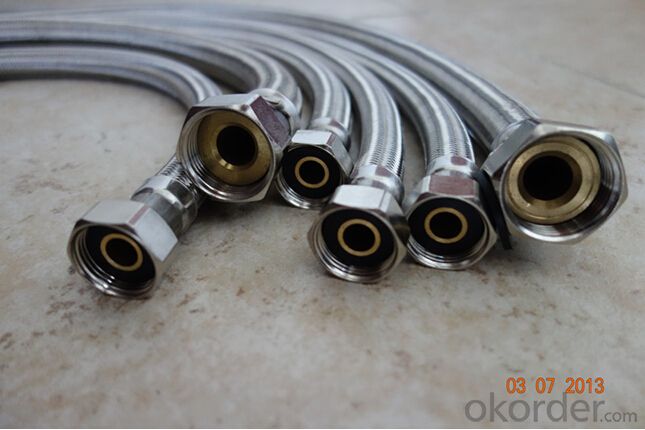
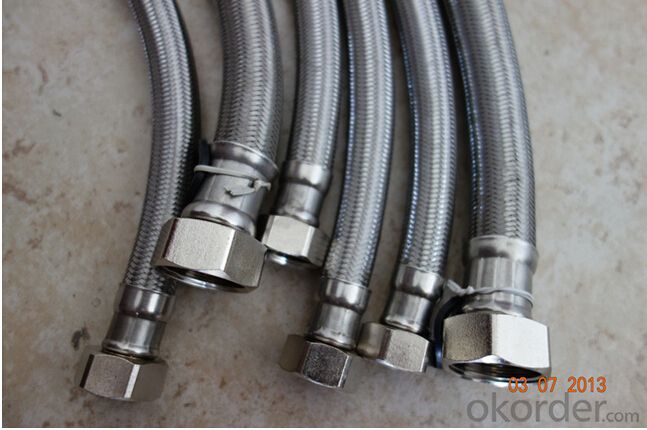
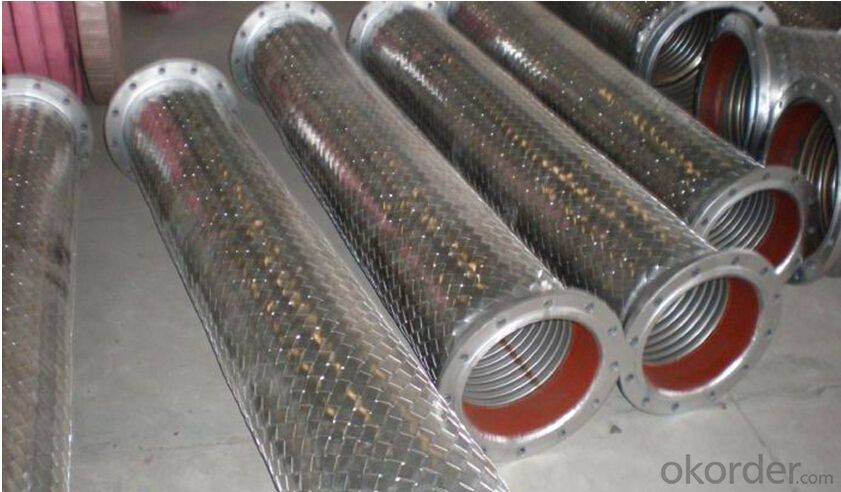
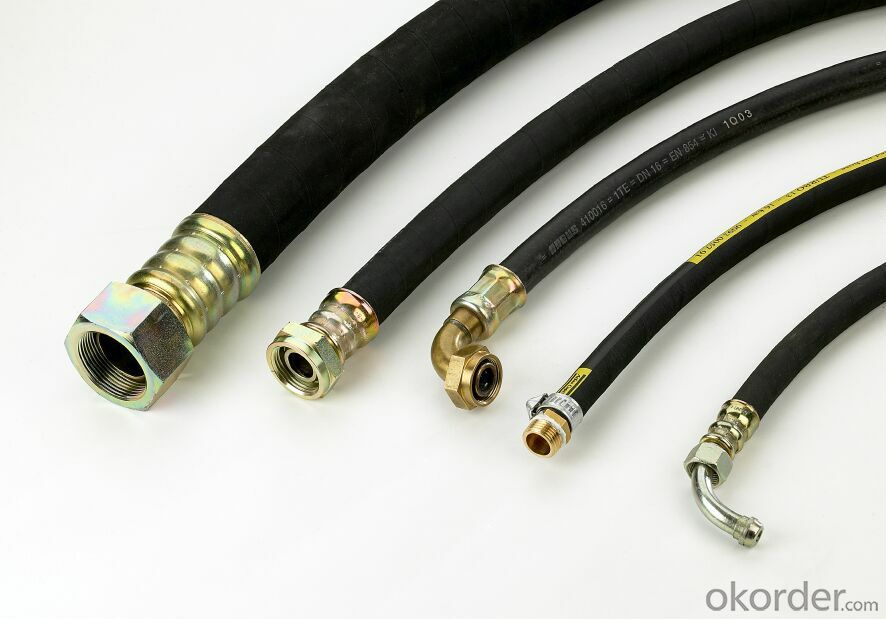
Package of Stainless Steel Braid Hose with 1/3'' Fittings:
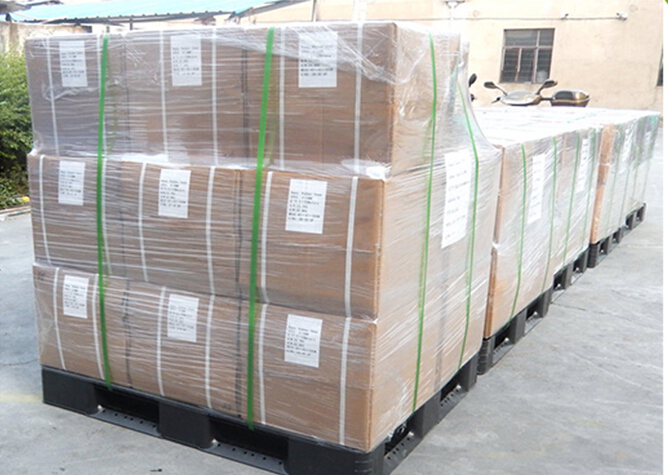
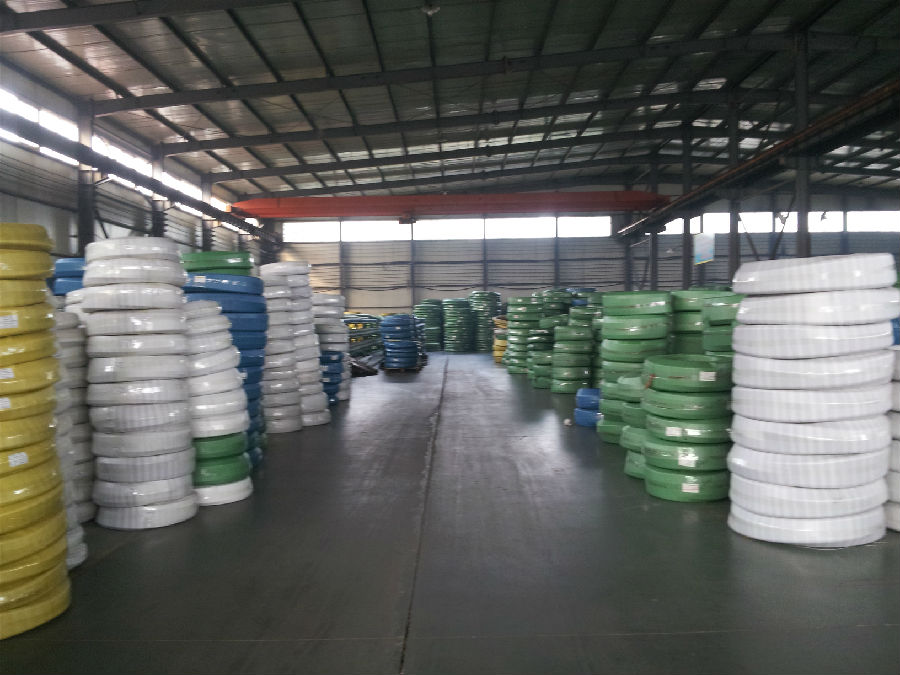
FAQ of Stainless Steel Braid Hose with 1/3'' Fittings:
Who we are:
Answer: We CNBM is a Chinese state-owned enterprise ranked 267th among the Global Fortune 500, as the largest building materials company,we have over 300 affiliated companies,and so many production lines and branch office distribute in China.
2. About our quality:
Answer: Every product needs to be quality proved before shipping.
3. About our service:
Answer: We could gurantte that we can reply you in 2 working hours.
- Q: Are stainless steel pipes suitable for fertilizer industries?
- Yes, stainless steel pipes are suitable for fertilizer industries. Stainless steel is highly resistant to corrosion, which is important in industries where the pipes come into contact with corrosive substances such as fertilizers. Additionally, stainless steel pipes have high strength and durability, making them capable of withstanding the harsh conditions of fertilizer production. They also have a smooth inner surface, which prevents the buildup of sediments and impurities that could affect the quality of the fertilizer. Furthermore, stainless steel pipes are easy to clean and maintain, ensuring the hygiene and safety standards required by the fertilizer industry. Overall, stainless steel pipes are an excellent choice for fertilizer industries due to their corrosion resistance, strength, durability, and ease of maintenance.
- Q: What does "stainless steel pipe" DN mean?
- DN is nominal diameter, nominal diameter (or nominal diameter), that is, all kinds of pipe and pipe accessories of universal caliber. The pipes of the same nominal diameter can be connected with each other and are interchangeable. It is not the outer diameter or inner diameter of the pipe in actual sense, although its value is close to or equal to the diameter of the pipe;
- Q: What are the common applications of stainless steel pipes in the construction industry?
- Stainless steel pipes are extensively used in the construction industry due to their numerous beneficial properties. Some of the common applications of stainless steel pipes in the construction industry include: 1. Plumbing systems: Stainless steel pipes are widely used in plumbing systems for their corrosion resistance, durability, and ability to withstand high pressure and temperature. These pipes are ideal for carrying water, gas, and other fluids in residential, commercial, and industrial buildings. 2. Structural support: Stainless steel pipes are commonly used in structural applications to provide support and stability. They are used in the construction of columns, beams, and other load-bearing structures due to their high strength and resistance to deformation. 3. Handrails and guardrails: Stainless steel pipes are commonly utilized in the construction of handrails and guardrails due to their aesthetic appeal, low maintenance requirements, and durability. These pipes provide safety and security while enhancing the overall appearance of the building. 4. Ventilation and exhaust systems: Stainless steel pipes are often used in the construction of ventilation and exhaust systems in buildings. They are resistant to corrosion and can handle high temperatures, making them suitable for carrying air and gases in commercial kitchens, factories, and other industrial facilities. 5. Balustrades and staircases: Stainless steel pipes are frequently employed in the construction of balustrades and staircases due to their strength, durability, and modern appearance. These pipes offer both functionality and aesthetic appeal, enhancing the overall design of the building. 6. Conduits for electrical wiring: Stainless steel pipes are used as conduits for electrical wiring in buildings. Their non-combustible nature and resistance to corrosion provide a safe environment for routing electrical cables and wires. 7. Fire sprinkler systems: Stainless steel pipes are commonly used in fire sprinkler systems due to their ability to withstand high temperatures and corrosion resistance. These pipes ensure the effective and reliable distribution of water for fire suppression in case of emergencies. 8. Solar panel installations: Stainless steel pipes are employed in the construction of solar panel installations. They are used to carry water or heat transfer fluids for solar thermal systems, contributing to the sustainability of the building. Overall, stainless steel pipes are versatile and highly beneficial in the construction industry. Their corrosion resistance, durability, strength, and aesthetic appeal make them an ideal choice for various applications, ensuring the longevity and functionality of buildings.
- Q: Are stainless steel pipes suitable for pulp and paper industries?
- Yes, stainless steel pipes are highly suitable for pulp and paper industries. This is primarily because stainless steel offers excellent corrosion resistance, which is crucial in environments where pulp and paper production takes place. The chemicals and liquids used in the pulp and paper industry can be highly corrosive, and stainless steel is resistant to corrosion caused by these substances. Additionally, stainless steel pipes are known for their durability and strength, making them capable of withstanding the rigorous demands of the industry. They can handle high temperatures and pressures, ensuring reliable and efficient performance in the production process. Furthermore, stainless steel pipes are hygienic and easy to clean, which is essential in maintaining the quality and integrity of the products in the pulp and paper industry. Overall, the exceptional properties of stainless steel pipes make them an ideal choice for use in the pulp and paper industry.
- Q: Are stainless steel pipes resistant to fire?
- Yes, stainless steel pipes are highly resistant to fire. Stainless steel is known for its excellent heat resistance properties, making it a suitable material for applications where high temperatures are present. When exposed to fire, stainless steel pipes retain their strength and structural integrity, minimizing the risk of collapse or failure. This resistance to fire is due to the high melting point of stainless steel, which can withstand temperatures well above those typically reached in fires. Additionally, stainless steel does not contribute to the spread of flames, making it a safe choice for fire protection and containment systems.
- Q: What are the different grades of stainless steel used in pipes?
- Pipes commonly utilize various grades of stainless steel, each possessing distinct properties and characteristics. Notable grades include: 1. Stainless Steel Grade 304: Recognized as highly versatile and widely employed, Grade 304 exhibits non-magnetic qualities, exceptional resistance to corrosion, and ease of weldability. Its applications predominantly revolve around sectors emphasizing hygiene and cleanliness, such as food processing plants, hospitals, and the pharmaceutical industry. 2. Stainless Steel Grade 316: Renowned for its unparalleled resistance to corrosion, particularly in environments abundant in chloride or saltwater exposure, Grade 316 frequently finds utilization in marine settings, chemical processing facilities, and coastal areas necessitating robust corrosion resistance. 3. Stainless Steel Grade 321: Grade 321 boasts titanium stabilization, rendering it more impervious to sensitization and intergranular corrosion at elevated temperatures. It commonly serves in high-temperature scenarios, exemplified by exhaust systems, furnaces, and heat exchangers. 4. Stainless Steel Grade 409: Designed specifically for high-temperature applications like automotive exhaust systems, Grade 409 showcases remarkable heat resistance and exhibits low thermal expansion properties, making it an ideal choice for enduring extreme temperatures. 5. Stainless Steel Grade 904L: Grade 904L excels in corrosion resistance, particularly combating pitting and crevice corrosion. Frequently employed in aggressive environments prevalent in chemical processing plants, offshore oil and gas platforms, and pulp and paper industries. These examples merely exemplify the array of stainless steel grades employed in pipe manufacturing. The selection of a particular grade hinges upon the specific application and desired attributes, encompassing corrosion resistance, temperature resistance, and mechanical strength.
- Q: Can stainless steel pipes be used for sewage pumping stations?
- Indeed, sewage pumping stations can utilize stainless steel pipes. Renowned for their resistance to corrosion, stainless steel proves to be an optimal material for sewage and wastewater applications. These pipes exhibit durability and strength, enabling them to endure the challenging circumstances and corrosive components present within sewage systems. Moreover, stainless steel exemplifies hygienic qualities and simplicity in cleaning, vital aspects for upholding the sanitation and effectiveness of a sewage pumping station. Consequently, stainless steel pipes establish themselves as a dependable and enduring selection for sewage pumping stations.
- Q: Can stainless steel pipes be used for food storage facilities?
- Yes, stainless steel pipes can be used for food storage facilities. Stainless steel is highly resistant to corrosion, easy to clean, and non-reactive with food, making it a suitable material for ensuring food safety and hygiene in storage facilities.
- Q: What is the difference between Schedule 5 and Schedule 10 stainless steel pipes?
- Schedule 5 and Schedule 10 stainless steel pipes are both commonly used in various industries and applications, but there are some key differences between the two. The main difference lies in their wall thickness. Schedule 5 stainless steel pipes have a thinner wall thickness compared to Schedule 10 stainless steel pipes. This means that Schedule 5 pipes have a higher internal diameter, allowing for a greater flow of fluids or gases through the pipe. Schedule 10 stainless steel pipes, on the other hand, have a thicker wall thickness, resulting in a smaller internal diameter. This makes them more suitable for applications that require higher pressure or strength, as the thicker walls provide increased durability and resistance to external forces. Additionally, the different wall thicknesses of Schedule 5 and Schedule 10 pipes affect their weight and cost. Due to the thinner walls, Schedule 5 pipes are lighter and less expensive than Schedule 10 pipes. In terms of availability, Schedule 10 stainless steel pipes are more commonly used in industrial processes that involve high pressure or corrosive environments, such as chemical plants or oil refineries. Schedule 5 stainless steel pipes are often used in applications where the flow of fluids or gases is not under extreme pressure, such as plumbing or low-pressure conveying systems. In summary, the main differences between Schedule 5 and Schedule 10 stainless steel pipes lie in their wall thickness, internal diameter, strength, weight, and cost. The choice between the two depends on the specific requirements of the application and the level of pressure or durability needed.
- Q: What is the difference between seamless and drawn-over-mandrel stainless steel pipes?
- The manufacturing process and physical properties set seamless stainless steel pipes and drawn-over-mandrel (DOM) stainless steel pipes apart. When it comes to seamless stainless steel pipes, a solid cylindrical billet of stainless steel is pierced and then extruded to create a seamless tube. This process guarantees a uniform and consistent thickness throughout the pipe, resulting in a flawless and seamless look. Seamless pipes are renowned for their exceptional strength and resistance to pressure, making them suitable for applications that demand reliable and resilient piping systems. On the other hand, drawn-over-mandrel stainless steel pipes are formed by transforming a solid cylindrical billet into a hollow tube through a series of drawing operations. A mandrel is then used to refine the tube's shape and size accuracy. This method ensures that the pipe has a uniform wall thickness and a smooth inner surface. DOM pipes are known for their precise dimensions and tight tolerances, which make them ideal for applications that require exact fitting and unobstructed flow, such as those found in the automotive and hydraulic industries. In terms of physical properties, seamless stainless steel pipes generally boast higher tensile strength and yield strength compared to DOM pipes. This characteristic makes seamless pipes more suitable for high-pressure and high-stress applications, like those found in the oil and gas industry. DOM pipes, on the other hand, excel in dimensional control and surface finish, making them perfect for applications that require precise dimensions and smooth flow, such as those found in the automotive and hydraulic industries. To summarize, the primary difference between seamless and drawn-over-mandrel stainless steel pipes lies in their manufacturing process and physical properties. Seamless pipes are created by extruding a solid billet, resulting in a smooth and seamless appearance. DOM pipes, on the other hand, are formed by drawing a hollow tube from a solid billet, resulting in exceptional dimensional accuracy. The choice between these two pipe types depends on the specific requirements of the application, including pressure resistance, dimensional accuracy, and surface finish.
Send your message to us
Stainless Steel Braid Hose with 1/3'' Fittings
- Loading Port:
- Tianjin
- Payment Terms:
- TT OR LC
- Min Order Qty:
- 1000 pc
- Supply Capability:
- 100000 pc/month
OKorder Service Pledge
OKorder Financial Service
Similar products
Hot products
Hot Searches
Related keywords

